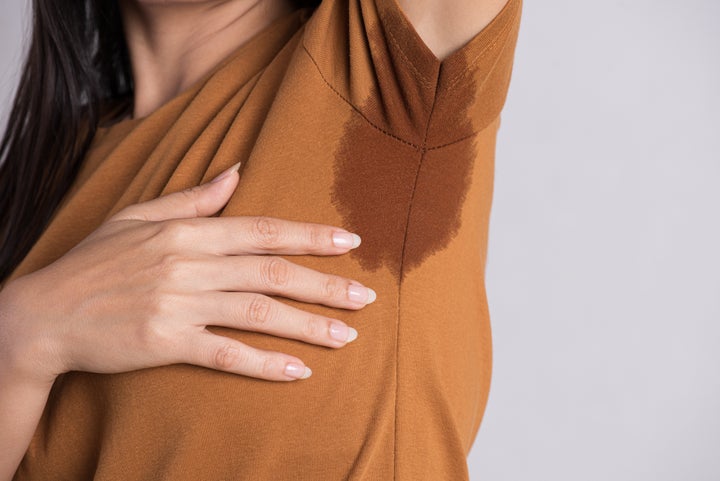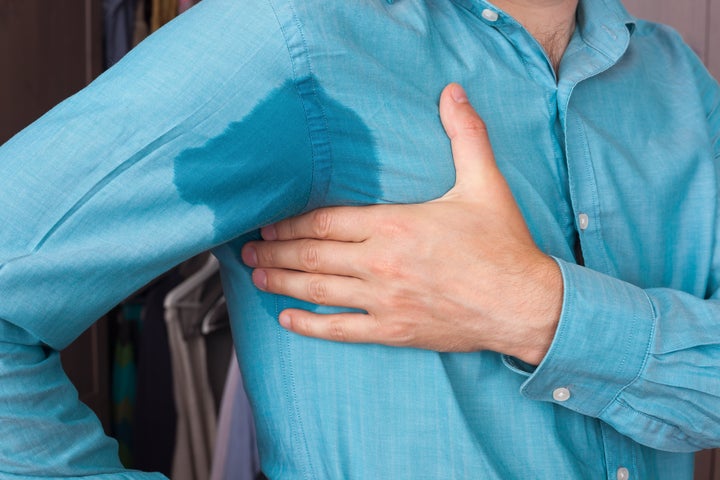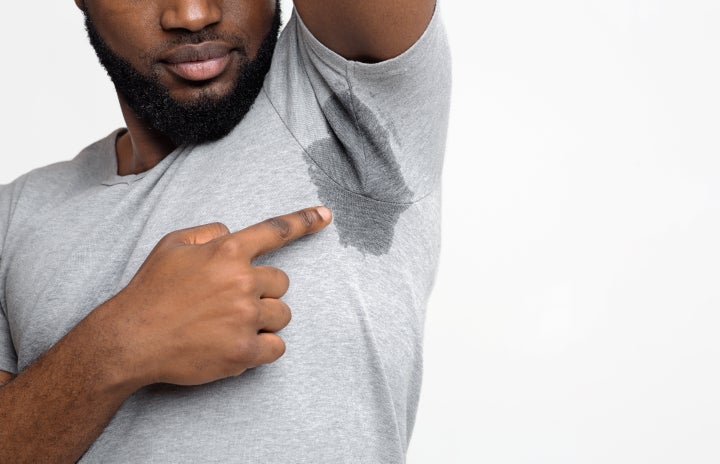Imagine going out on a hot summer day without worrying that your shirt will end up soaked in sweat under your arms, on your upper back, all down your abdomen, or all of the above. When you’re dressing for work or a social event (while wearing a mask, of course), it’s tough to make a personal style statement that’s not drenched in sweat.
Sweating is going to happen, no matter what you try to stop it. In fact, we need it to happen. Perspiration helps the body cool down to a healthy temperature when we experience a rise due to external or internal heat.
“Exercise, stress, weather or hormonal changes can increase the heat,” said board-certified dermatologist Kemunto Mokaya.
We spoke with doctors and stylists to help you come up with a no-sweat strategy, from the inside out. Here’s their advice.
In case you’re wondering why your armpits are such a sweaty problem...
Eccrine glands, which are in charge of producing sweat, “are found all over your body, but are more concentrated in the armpits, palms and soles,” said dermatologist Ife J. Rodney, founding director of Eternal Dermatology and Aesthetics in Maryland.

And then there’s the smell. Armpits also contain apocrine glands, which secrete an odourless substance that becomes smelly when it’s degraded by bacteria. Armpit hair takes the smell to the next level.
“As a result of its location near hair follicles, in combination with bacteria, sweat in these areas typically smells worse,” said cosmetic dermatologist Michele Green.
Other factors that can increase how much you sweat are medications, conditions like diabetes, cancer or thyroid imbalances, your body mass (“People with a larger body mass use more energy and produce more heat, even when resting,” Rodney said) and your genetics.
Before you completely rejigger your wardrobe, you can try to control sweat from the inside out.
The go-to product that every dermatologist recommends to prevent sweating is antiperspirant. Deodorant protects against odour, while antiperspirant protects against sweat and odour. It’s a controversial product because it contains aluminium, which is linked to both Alzheimer’s and cancer, but doctors we’ve previously spoken to agreed there isn’t enough conclusive evidence to prove it. (Keep reading below for a more natural approach.)
Look for antiperspirant products that contain aluminium chloride, zirconium salts and aldehydes, which help stop you from sweating. Deodorants, on the other hand, only neutralise the smell of sweat. “Antiperspirants are first-line in management of excessive sweating,” Mokaya said. Green recommends Drysol, because it contains aluminium chloride hexahydrate, which works directly on the cells that produce sweat.
For a natural approach, try an armpit detox
There’s one big thing to note regarding antiperspirants ― their chemicals come with potential side effects, such as redness, itching, dry skin and even headaches. If you’re looking for a natural approach, try an armpit detox.
Armpit detox restores the natural microbiome of your underarm area, which can reduce the tendency for the body to perspire or sweat. J Ken, research and formulation chemist and owner of Daily Detox Hacks, recommends using 1 tablespoon of bentonite clay, apple cider vinegar, a carrier oil like coconut, and 2 or 3 tablespoons of essential oils like tea tree oil, which is a natural antibacterial agent.
“Mix till you have the consistency of a stiff yogurt,” Ken said. Apply a thin layer on your armpit, let it sit for three minutes and cleanse with warm water afterward. “Repeat twice daily for between three and seven days.”

The best (and worst) colours and fabrics to conceal sweat
First of all, there are products you can buy to make your clothes a little more sweat-proof. With disposable or multi-use cotton armpit pads like Purax Pure Pads, Lavince Sweat Pads and Dandi Patch, you just stick them inside your clothing to absorb sweat. There’s also clothing with built-in underarm pads, like Thompson Tee’s Sweat Proof undershirt.
The colours that make armpit sweat even more pronounced are bright colours, greys and nudes. Embrace either really dark shades, like black and navy, or very light colours, like pure white, as they conceal sweat the best.
“But you don’t have to give up wearing colour because you struggle with sweating, as long as you choose the right fabric,” said Shelby Goldfaden, manager of merchandising and product development with womenswear brand M.M.LaFleur. Go for natural, breathable fibres like cotton, bamboo or linen, which don’t trap heat.
“Ideally, go for 100% cotton; not only is it better for your skin but it is also great for the environment,” said Amra Beganovich, style influencer and founder of New York-based digital agency A&E.
Workout brands like Nike and Lululemon have perfected dry-wicking technical fabrics, which draw sweat away from the body and help it to dry quickly upon contact with the air.

Aside from cotton and technical fabrics, your next-best bet is polyester, which both Goldfaden and celebrity stylist Amber Alexandria recommend for being lightweight and comfortable.
And as for solids vs. prints, prints are clearly the best. Camo, tartan, gingham, houndstooth, floral patterns and the ever-popular tie-dye are great options for concealing sweat marks.
Be tactical about the types of garments you wear
While the concept of adding more layers may seem counterintuitive on a hot day (won’t more layers equal more sweat?), layers can be easily popped on to conceal sweat, and then taken off to cool down ― think lightweight shrugs or wrap tops. When styling multiple pieces of clothing together, just keep in mind the weight of the fabric. “Try a loose slip dress with side slits with a mesh bralette underneath, paired with a flat sandal or open-toe heel,” Alexandria suggested.
Sleeved dresses with wide armholes are a great option, as they allow air to flow freely. “Something with a cap sleeve and lower armholes will help combat stains and keep you cool,” Goldfaden said.
You can also go for a sleeveless dress, as it provides more ventilation and keeps the area cooler, especially if it’s loosely fitted. ”One huge benefit of wearing sleeveless tops is the ability to rinse, wipe, pat dry and if need be, reapply deodorant to the area,” said personal and fashion stylist Lana Blanc. Goldfaden’s favourite is an easy shift dress.
When buying bras, always go for the one with a thin band. “Bras with a thick band tend to make us sweat more, so try to opt for thin bras made from lace, mesh or cotton,” Blanc said.
Finally, if you still wish to wear figure-hugging dresses and fitted garments, opt for a black sleeveless LBD with cutouts. “If loose tops are not your thing, go for a more fitted shirt in a lighter fabric,” Alexandria said.